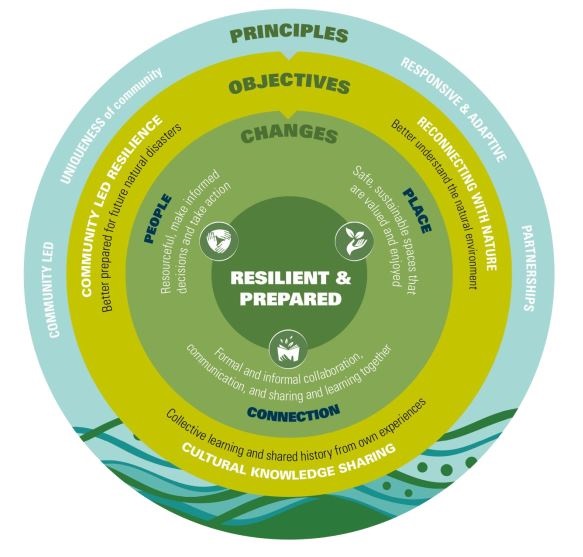The Resilient Clarence program is funded from three grants received from Resilience NSW under the Bushfire Community Recovery and Resilience Fund Stream 2. The program is managed by us and our project partners include the Red Cross, Vinnies, Clarence Landcare, and Envite Environment. Each of the bushfire-impacted communities we will be working with are very different and each has its own characteristics and (hi)story.
To capture our program's progress and define what success looks like, we have commissioned the expert consultants from Strategic Development design our Monitoring Evaluation and Learning Framework (MELF). We will be guided these principles:
The MELF is based on a co-designed Theory of Change that articulates our program’s pathway of change towards achievement of the objectives set:
